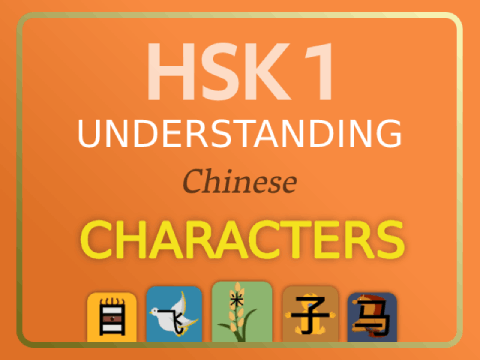Introduction to Chinese characters

Chinese characters are logograms—written symbols that represent morphemes and words. They are the smallest functional unit of the Chinese writing system. Each character has at least one pronunciation, and each pronunciation has only one syllable.
History
| Oracle bone script | Bronze script | Seal script | Clerical script | Regular script (traditional) | Regular script (simplified) |
|---|---|---|---|---|---|
 |
 |
 |
 |
 |
 |
| Oracle bone script |  |
|---|---|
| Bronze script |  |
| Seal script |  |
| Clerical script |  |
| Regular script (traditional) |  |
| Regular script (simplified) |  |
见 (jiàn) “to see” =  “eye” +
“eye” +  “person (kneeled down)”
“person (kneeled down)”
Chinese characters were invented about 3,000 years ago and slowly evolved into the script we use today. Over time, the characters have been undergoing considerable changes. Most of them have changed forms; some have even gained new meanings and changed components and pronunciations. Therefore, the traditional analysis does not apply to some modern characters.
Strokes

The left falling stroke touches the top horizontal part. This character is 刀 (dāo) “knife.”

The left falling stroke crosses with the top horizontal part. This character is 力 (lì) “force.”
Chinese characters are written with lines that are called strokes. Each stroke is written in a specific direction, length, position, and order that cannot be changed, as it could result in writing a different character.
Individual and compound characters

刀 (dāo) “knife” is an individual character made up of one single part.

分 (fēn) “to separate” is a compound character that is made up of 八 (bā) “eight” on top and 刀 (dāo) “knife” at the bottom.
In general, we can separate characters into two groups, individual and compound characters. An individual character cannot be divided into smaller parts, and they are usually used as building blocks (components) to form compound characters.
Components

Most characters are compound characters made up of components. A component has three main functions, contributing its meaning (semantic), sound (phonetic), or form (graphical). In the character 分 (fēn) “to separate,” the bottom component, 刀 (dāo) “knife,” contributes its meaning, a tool to separate objects, and the top component, 八 (bā) “eight,” contributes its form, an object being cut in half.

